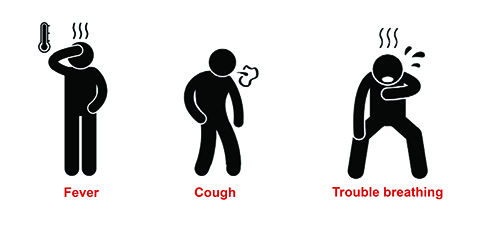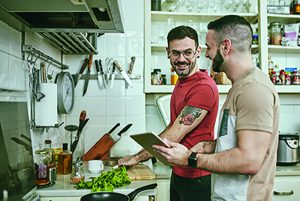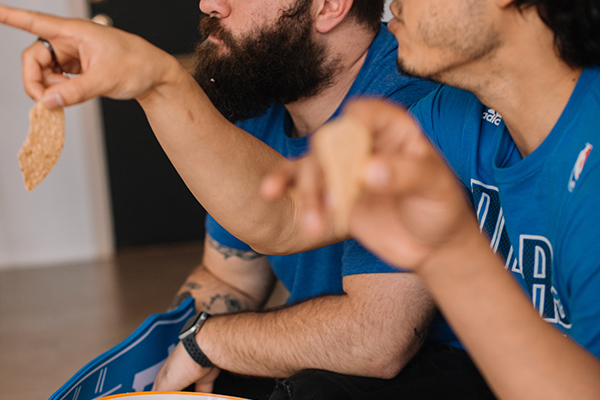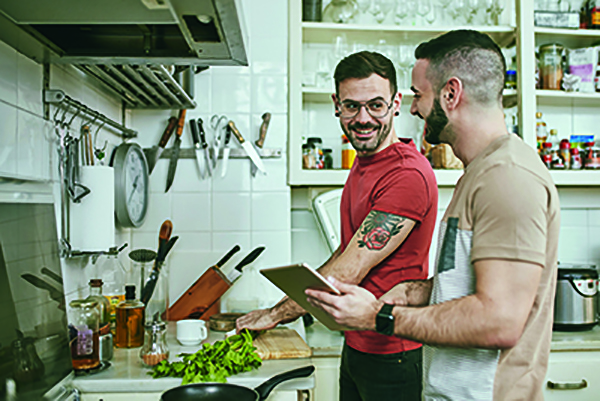Novel coronavirus, COVID-19
- COVID-19 vaccinations are available to individuals who qualify according to state guidance. PacMed is partnering with public health partners in a mass vaccination effort. Learn more.
- PacMed is recommends public testing for COVID-19. Visit our COVID-19 Testing page for details.
- PacMed is offering in-person and virtual visits for patients to address your medical concerns. Schedule now online, through MyChart or by calling 1.888.472.2633.

Some visit types may require a COVID-19 test before coming in for care. We will let you know. You can help by monitoring your own symptoms. If you are experiencing COVID-19 symptoms, please call your health care provider as a first step, before coming into a clinic, doctor’s office or emergency department. We can help triage your case and direct you to the best care for you.
You may also use our online Coronavirus Assessment tool.
PacMed is working closely with the Centers for Disease Control and Prevention (CDC), as well as state and local health authorities. Our shared goal is to care for affected individuals while taking steps to limit person-to-person spread within our communities.
King County issues regular updates on COVID-19 and public health measures. Read the latest bulletins.
Overview of the virus
COVID-19 is an illness caused by a new strain of coronavirus. It is believed to spread in ways similar to the common cold—such as through coughs, sneezes, or handshakes.
A person who has caught the virus may not show symptoms for between 2-14 days. This is called the incubation period. The person can spread the virus during this time. The virus may also live on non-disinfected surfaces for up to 9 days.
We are following established infection prevention protocols and remain prepared to care for patients. We have trained and practiced for these scenarios. When you enter a PacMed clinic, you may see certain staff members wearing masks. This is a preventative measure. Patients who exhibit any respiratory symptoms will also be asked to wear masks.
Chloroquine/Hydroxychloroquine prescription for COVID-19
There are no US Food and Drug Administration (FDA)-approved drugs specifically for the treatment of patients with COVID-19. At present, clinical management includes infection prevention and control measures and supportive care. There are no currently available data to inform clinical guidance on the use, dosing, or duration of hydroxychloroquine for prophylaxis or treatment of SARS-CoV-2 infection.
www.cdc.gov/coronavirus/2019-ncov/hcp/therapeutic-options.html
How to protect yourself and others
The following practices are recommended to stop the virus from spreading through different pathways:
- Practice social distancing, avoid public gatherings and work from home when possible.
- Wear a mask when leaving your home. Masks are now required in Washington State when social distance cannot be maintained.
- Clean your hands often by washing them with soap and water for at least 20 seconds or using a hand sanitizer that contains 60%–95% alcohol. Soap and water should be used if hands are visibly dirty. It is especially important to clean hands after going to the bathroom; before eating; and after coughing, sneezing or blowing your nose.
- Cover your cough or sneeze—using your elbow or a tissue. Then throw the tissue in the trash. (Putting a tissue on a table contaminates the surface of the table with germs.)
- Avoid touching your eyes, nose and mouth.
- Stay home except for food shopping and medical appointments.
- Self-quarantine if you have been told to by a medical professional.
- Routinely disinfect frequently touched objects and surfaces. You can use a cleaning spray or wipe that includes effective disinfectant ingredients, such as 62%-71% ethanol (ethyl alcohol), 0.5% hydrogen peroxide or 0.1% sodium hypochlorite (bleach).
- If common cleaning products are unavailable, you may be able to dilute the effective chemicals with water to create a safe and effective solution (see this handy dilution calculator).
- Note: It can be very dangerous to mix different cleaning products together. It’s safest to only dilute with water.
Higher-risk populations
COVID-19 is more serious for older adults and those with certain health conditions or other risk factors. Health care workers and first responders may also be at elevated risk of getting COVID-19 due to close contact with affected populations. Please check with your health care provider if you suspect you may have elevated risk.
If you fall into a high-risk category, we recommend taking additional precautions to protect yourself from exposure:
- Stay at home as much as possible.
- Have items delivered or ask for help with shopping and errands.
- Avoid potentially infected people.
- Diligently following the protective and disinfecting measures listed above.
If you feel sick
Confirmed symptoms of COVID-19 include:

- Fever or chills
- Cough
- Shortness of breath or difficulty breathing
- Fatigue
- Muscle or body aches
- Headache
- New loss of taste or smell
- Sore throat
- Congestion or runny nose
- Nausea or vomiting
- Diarrhea
If you think you have been exposed to the virus and have these symptoms, please call your health care provider as a first step, before coming into a clinic, doctor’s office or emergency department. Your health care provider can give you instructions for seeking care, and will help you avoid exposing others. You can find phone numbers for each PacMed clinic here: www.PacMed.org/locations.
In addition, you may also utilize virtual visits with a health care provider, or an online coronavirus assessment tool provided by Providence.
Additionally, if you are in King County and believe you were exposed to a confirmed case of COVID-19, please contact the King County novel coronavirus call center: 206.477.3977, between 8 AM-7 PM daily.
When to stay home
You should stay home if:
- You have been told by a health care professional to self-quarantine.
- You believe you have been exposed to the virus, even if you are not showing any symptoms.
- You are sick or have COVID-19 symptoms (also contact your health care provider).
- You have traveled to a country that the CDC lists at a level 2 or 3 travel health notice and feel ill.
- You are in a high-risk category as outlined above (over 60, preexisting medical condition, etc.).
Thank you for working with us to keep yourself and our communities safe. If you have questions about whether you should come into the clinic or another facility, such as an emergency room, please call us first at 1.888.4PACMED (1.888.472.2633).
Other resources to stay informed
- COVID-19 Testing at PacMed
- King County Public Health:
COVID-19 Updates and Alerts
King County cases self-report line: 206.477.3977
(Call between 7 AM-8 PM if you believe you believe you were exposed to a confirmed case of COVID-19) - WA Dept. of Health:
2019 Novel Coronavirus Outbreak (COVID-19)
Washington State Novel Coronavirus Call Center: 800.525.0127 (for general information) - U.S. – Centers for Disease Control (CDC):
Coronavirus Disease 2019 (COVID-19) Updates - World Health Organization (WHO):
Advice for the Public
Coronavirus Q & A
Rolling Updates on COVID-19 - Johns Hopkins CSSE:
Real-Time Global Outbreak Map
How reliable are heart monitoring devices?

What surprises many is that heart disease – and the conditions that lead to it – can happen at any age. According to the CDC, high rates of obesity and high blood pressure among younger people ages 35–64 are putting them at risk for heart disease earlier in life. Knowing that half of all Americans have at least one of the top three risk factors for heart disease – high blood pressure, high cholesterol, and smoking – make February the perfect time to consider our hearts’ health.
With heart health comes the popular question of heart monitoring devices. Are these devices accurate? What are the best heart monitoring devices on the market? In an effort to better understand heart health, cardiologist Dr. Philip Massey with Pacific Medical Centers has provided valuable insights on these topics.
1. Why do you think heart monitoring has become such a point of interest in fitness?
Heart monitoring has become incredibly popular over the last few years. Monitoring your heart’s activity providers people with an indication for how hard they are working out. I’ve noticed heart monitoring to be particularly useful for those who are not necessarily as familiar with working out and knowing what range their heart should be in to ensure they are partaking in a healthy and safe workout. The formula to calculate your maximum heart rate is 220 minus your age. So, if you’re 50 years old, your maximum heart rate would be 170 beats per minute, and your training zone would be more like 85 to 145 beats per minute. Which is 50-85 percent of one’s maximum heart rate.
A lot of new and popular fitness regimes, including Orangetheory Fitness, Peloton and Mirror all rely heavily on heart rate. Again, this is incredibly useful information when you need to understand whether you are working out in a healthy range.
2. How important is it to monitor your heart rate?
I believe monitoring heart rate is incredibly important and a great indicator of your physical health – whether you are working out or in a rest state. Generally, while at rest, a heart rate of 60-100 is considered healthy, however, you should always consult with your physician to be certain.
I also believe having a better understanding of your active and resting heart rate can help you perform better, safer workouts. Knowing this information will allow for people to safely push themselves during workouts, as they will be aware of the safe zone they should be aiming for. This will also help you build up your endurance, which is incredibly important for athletes who are training for physical milestones – marathons, races, etc.
3. Are you a proponent of heart monitoring during working out?
As with everything, there is a level of vigilance needed. Your active heart rate should not be the only indicator of a healthy and safe workout. However, smartwatches can be incredibly useful to users and the market for manufactures continues to grow – Apple, Samsung, Garmin and Fossil are just a few of the watches I see my patients use. Benefits of smartwatches can include:
- Reminding users when to exercise via a built-in step counter
- Heart rate monitor, which can let users know when they are working out too hard
- Heart regulation measurement, which is incredibly beneficial to patients 50+ as this feature can pick up potentially irregular heart rhythms
While nothing is 100 percent accurate, I do believe smartwatches provide more positives than negatives and have no issue with my patients utilizing them during their workouts and daily lives.
While smartwatches can be remarkably accurate, I always caution my patients on relying on exercise equipment to monitor their heart rate. Exercise equipment (elliptical, treadmill, bike, etc.) that measures heart rate via a hard grip are less accurate and should not be solely used to measure heart rate when working out.
Fitness companies, such as Peloton and Orangetheory Fitness, that utilize a chest strap to monitor heart rate are much more accurate and can be used to adequately determine your heart rate if you do not own a smartwatch.
4. What does our heart rate say about our overall health?
In general, heart rate shows how active and in (or out) of shape someone is. Having a lower resting heart rate in the 50s or 60s typically indicates someone is in good health and overall good shape. I always check heart rate during yearly physicals because if someone’s heart rate and blood pressure are not under control, they are at a higher risk for developing a variety of health problems, including a stroke. These risks are increased in patients 40+ so ensuring you have a yearly physical is very important.
5. What are some ways we can keep our heart health in check?
There are quite a few things you can do on a daily basis to ensure your heart health is in check. Make sure you are getting the recommended 150 minutes of exercise weekly, which roughly translates to 30 minutes, five days a week. While it has become trendy to ensure you hit 10,000 steps a day, I instead recommend focusing more on the duration of time spent working out versus the number of steps you’ve taken in a single day.
Also, make sure you are mindful of what you are eating. Focus on eating more whole foods with less saturated fats – think leafy greens, veggies, fruits vs. starchy, carb-based foods.
Lastly, make sure you work with your primary care provider to know the heart rate numbers you should be aiming for, whether that is when you are at rest or working out.
6. Is there anything else people should be aware of regarding heart health?
The most important take home is to stay active. While you do not need to use a heart rate monitor, I recommend you understand your healthy ranges and try to stay within those when active – whether that is walking or intense cardio. Also, remember that no two days are the same. If you are not able to exercise one day, understand that is acceptable. Ensure you are targeting 150 minutes of activity per week to help your heart remain healthy. Lastly, be sure to see your primary care provider annually, who can ensure you are staying on track with your heart health!
Lentil Walnut Tacos with Avocado Crema
Savory lentils are topped with smooth-tasting avocado cream and served in corn tortillas in this vegan recipe. For speedy preparation, cook lentils and toast walnuts a day in advance. Other tricks: measure all dry spices into a small cup so they are ready to add to the pot!
PacMed Donates Specialty Care to Our Neighbors
 While programs exist that help cover basic health needs, specialty care for more serious issues can be hard to access for people at financial risk.
While programs exist that help cover basic health needs, specialty care for more serious issues can be hard to access for people at financial risk.
Project Access Northwest aims to close that gap. PacMed is proud to be a long-time partner of Project Access Northwest. It’s one of many ways we support our community.
People who use Project Access Northwest are often un- or underinsured. It coordinates specialty care and provides other programs for people on the brink. Last year, PacMed physicians provided over 10% of all donated specialty care sought through Project Access Northwest.
We honor the people struggling to make ends meet and are grateful for our partners at Project Access Northwest and many other local nonprofits and programs. Together, we can help our neighbors find and maintain stability in these changing times.
To seek assistance or learn more, visit www.projectaccessnw.org.
LWA Spotlight: Looking forward in 2020
We couldn’t have done it without you! 2019 was another great year for the Living Well Alliance. We started a new “Yoga at Work” wellness program, taught over 100 nutrition and wellness classes in 57 companies and hosted tables at 25 health fairs.
Our lead dietitian, Christy Goff, was also highlighted in the media! A quick sample: she performed a cooking demo on King5, was a guest speaker on two podcasts (WARM 106.9 and DASH radio) and was interviewed for articles at The Seattle Times and What’s Up NW.
Stay tuned for another busy 2020 year! We will host monthly webinars that any company can join, as well as continue offering our popular “Yoga at Work” classes. Our new nutrition classes include “Food and Mood” and “Build Up Your Bones.” Visit us online to learn more about Living Well Alliance classes, webinars, screenings and other services.
Recipe: Dry January Kombucha Mocktail
See this recipe demonstrated by an LWA expert!
 Kombucha is a fermented,* lightly effervescent tea-based beverage that is relatively low in calories and sugar. It contains live and active cultures (similar to yogurt) that help strengthen your gut microbiome. Kombucha is refreshing, bubbly and subtly sweet, especially if the brewer combines it with fruit juice.
Kombucha is a fermented,* lightly effervescent tea-based beverage that is relatively low in calories and sugar. It contains live and active cultures (similar to yogurt) that help strengthen your gut microbiome. Kombucha is refreshing, bubbly and subtly sweet, especially if the brewer combines it with fruit juice.
Nutrition: Heart healthy / Super Bowl snacks
Heart Healthy
It’s always a good time to take care of your heart, and February is no exception. In fact, February is National Heart Month! Though genetics do play a role in heart health, daily habits and choices can make a difference in your health.
This month give your heart a little extra love to start the year off strong. Try these three big-hitting tips to get started!
- Stress less. In today’s fast-paced world, it can be hard to find peace. Overworking and under sleeping are two common stressors that many Americans endure. While stress in short bursts can be positive, chronic, daily stress is harmful to your cardiovascular health.
- Plant power. While going full vegetarian is not necessary, research shows the benefits to heart health of adding more plant foods into our diets. Plants contain healthy, unsaturated fats, loads of fiber, antioxidants and phytochemicals. Furthermore, the potassium content in plant foods can help to reduce blood pressure because potassium lessens the effects of sodium. Aim for foods like bananas, sweet potatoes, avocados, cantaloupe, dark leafy greens, potatoes and prunes.
- Cut the salt and add some spice. Overdoing it with salt can increase blood pressure. Some common places for increased sodium are from restaurants, packaged foods, frozen meals and sauces. In the grocery store, compare products! A quick glance at Sodium in the nutrition label is easy. Aim for a percent daily value that’s below 30% per serving! Also, to increase flavor without salt, try reaching for fresh, dried or ground herbs and spices instead of the saltshaker.
If you have concerns about your heart health, the PacMed Cardiology department is here to help. To make an appointment, use our online appointment tool or call 206.505.1300.
Fast, easy, healthy Super Bowl snacks!
Having a Super Bowl party on February 2? Great! Ready for all those greasy chips, rich dips, salty meats and too-sweet nibbles? Not so much?! We can help.
No need to break all your 2020 resolutions in one afternoon. Try these enticing, easy recipes for a healthy, victorious party scene.
Pork Satay from Taste of Home.
Thin, skewered slices of pork in a lightly peanut–Thai seasoning.
Healthy Guacamole with Peas from Eating Bird Food.
Secret ingredient? Frozen peas. Enjoy!
Sweet Potato Skins from Pinch of Yum.
You know these are going to taste good, even before you see the sweet potatoes, spinach, and chickpeas in the recipe!
Garlic Bean Dip from Taste of Home.
Mm, garlic. What more do we need to say? Maybe, “sour-cream-free”?
Light Crock Pot Buffalo Turkey Meatballs from The Creative Bite.
Crockpot will travel! At least these delectable meatballs will.
Reconnect with OneMoreQuestion
 If you’ve ever been depressed, you know how easy it can be to hide it. People struggling with mental health can walk through the world with a smile and a “Fine,” hiding a sometimes-serious need for help.
If you’ve ever been depressed, you know how easy it can be to hide it. People struggling with mental health can walk through the world with a smile and a “Fine,” hiding a sometimes-serious need for help.
PacMed created the #OneMoreQuestion campaign in 2019 after one of our primary care providers followed her intuition and gave a teenage patient a depression screening at the end of the family’s doctor visit. When asked, the young man revealed he had planned to end his life that night. Because of one more question, we were able to connect the teen and family to resources and support.
The example of this doctor is something we can all emulate in our daily lives— to be more present when checking in with friends, acquaintances or even strangers.
We all “need to be seen and heard in an honest way,” said Dr. Lisa Ivanjack, PacMed co-chief of primary care, in an interview last year with Seattleite. “We may not have all of the answers or be able to solve someone else’s problems, but we can listen. This simple act can drastically change someone’s outcome or perspective during a hard time in their life.”
Mental health issues will affect one in five Americans during their lifetimes. Chances are someone you know is affected right now. Not sure what to ask? Here are some ideas:
I really want to know: how are you feeling today?
You don’t seem like yourself. Is there anything you’d like to talk about?
Are you feeling down? Would you like to talk?
“Big or small, these acts can bring a sense of caring into someone’s darkest times. One more question can have a profound, positive effect on which path someone takes when struggling,” said Dr. Ivanjack. By talking openly about mental health, we help break down the stigma around it.
Your primary care doctor can help identify resources and support systems. They also can refer you to a licensed mental health provider. In most PacMed clinics, we have behavioral medicine therapists right down the hall from your primary care doctor.
When things get busy this year, remember to slow down and find an opportunity to ask one more question. You never know how healing that simple act might be.
RESOURCES…
- PacMed.org/depression
- Emergencies: 9-1-1 or the ER
- 24-hour crisis lines:
King: 1.866.4.CRISIS
Snohomish: 1.800.584.3578
Pierce: 1.800.576.7764 - Local support: 2-1-1
- Anonymous screening: HelpYourselfHelpOthers.org.
- Suicide prevention lifeline: 1.800.273-8255
- PBS NewsHour, ”I Got Your Back”
- Forbes, ”How to Create a Workplace That Supports Mental Health”
Rekindle love at any age
 Love is an important factor for our emotional well-being. While some can fill that need through friends, pets, community or other outlets, many of us look to intimate relationships for love.
Love is an important factor for our emotional well-being. While some can fill that need through friends, pets, community or other outlets, many of us look to intimate relationships for love.
Below are some scenarios you might relate to—looking for new love, adding spark to a long-term relationship or mending a family bond. Each is followed by advice from PacMed Behavioral Medicine specialist Rebecca Wolff, LMHC.
Keep in mind, relationships are complex, and there is no one-size-fits-all advice for everyone. We encourage seeking additional support if needed.
Keep the fire burning
Tia and David have been married for 15 years. They have a healthy marriage, except their whirlwind romance early on has cooled significantly in recent years. Privately they wonder, “Will we ever have passion again?”
“With any relationship, the amount of time you devote to it is what you’re going to get out of it. Find ways to show love for your partner in the way they experience love. We often show love in the way that is most meaningful to us, even though our partner may feel loved in a totally different way. Have a conversation to discover what feels meaningful to each other and incorporate those ways of showing love into your everyday lives. Also, look for activities you enjoy doing together. Life gets busy, so schedule shared activities on a regular basis to help maintain a strong connection. Finally, don’t let technology supersede your relationship. We often spend too much time watching TV or on our phones, so our partner may feel a disconnect or unvalued.”
Find a new flame
Anita and Jim met in college, married and had three wonderful children. Tragically, Anita was left to raise them alone when Jim passed away unexpectedly. Two years have passed, and Anita is open to exploring relationships again—but she’s not sure where to begin.
“Online dating is a popular go-to for dating and can work for many people; however, it can be helpful sometimes to ground dating in a process of self-discovery as well. Focus on finding new activities you might enjoy—join a new group or get out of your comfort zone a bit. Maybe take that trip you’ve always dreamed of. Put yourself in a situation where your senses are awakened, and you’ll be more receptive to meeting someone along the path.”
Repair a scorched relationship
Anthony had a close relationship with his daughter until the divorce. Despite shared custody, he felt his daughter favored his ex-wife. Then, a series of minor disagreements with his daughter led to her cutting off contact with him. Now it’s been a few years since they spoke.
“Repairing a family relationship is a big challenge. In those situations, each party genuinely feels hurt. As the adult, you need to be willing to hear a tough conversation and let your guard down to really focus on what the other person is saying. It requires self-reflection. Ask yourself honestly, ‘What have I contributed to this situation?’
“Whether the breakdown is with a child, a parent or a sibling, it’s important to accept each other for who you are. Not for who you always hoped they would be, but for who they actually are. This goes for yourself as well. Learn to begin from a place of self-compassion, to allow yourself to fail and try again. When you realize no one is always perfect, it’s easier to extend kindness and grace to those you care about the most.”
You can see Rebecca, or one of our 20 other Behavioral Medicine providers, if you have a PacMed primary care doctor.
WE RECOMMEND…
- Authors John and Julie Gottman: 10 Lessons to Transform Your Marriage; Eight Dates
- Airplane mode for your phone during dinner or date night
- Meetup groups: www.meetup.com
- Individual/couples/family counseling
Reshape your habits for better health!
 How we choose to eat, drink and unwind plays a major role in our health over time. Entering the new year, we asked several PacMed providers to offer insight into what’s trending—and what should be.
How we choose to eat, drink and unwind plays a major role in our health over time. Entering the new year, we asked several PacMed providers to offer insight into what’s trending—and what should be.
Get Moving
“An hour of activity outside of work per day complements the other factors of good health: diet, sleep and stress management. It doesn’t need to be strenuous—walking is an excellent option. Find an activity buddy. Studies show even an online accountability partner helps the behavior stick.” —Charles Falzon, MD, MBA, Family Medicine doctor at Northgate
A Mediterranean Boost
“A ‘Mediterranean’ diet of mostly fruits, vegetables, whole grains, beans, nuts, seeds and olive oil lessens the risk for stroke. It also may link to longevity, weight loss and a lower risk for cardiovascular and fatty liver diseases. The diet allows for low-to-moderate consumption of wine, fish, poultry and dairy (but very little red meat).” —Rex G. Cheng, MD, Gastroenterology and Hepatology specialist at Canyon Park and First Hill
“Dry January”
“Many people start the new year by abstaining from alcohol for a month. Why is this a good thing? People can develop a tolerance with regular drinking. Taking a break helps reset and gives your liver a chance to repair itself.” —Dimple Sahay, MD, Family Medicine doctor at Renton
Whole30: Try it (Not A Diet)
“If you decide to get on the Whole30 bandwagon, remember it’s a 30-day elimination diet—not a long-term strategy for health or losing weight. There may be success stories, but there’s no scientific evidence backing Whole30 yet. Even if you find some foods to eliminate, you’ll need to follow a proven healthy eating plan—like the Mediterranean diet—for lasting health.”
—Christy Goff, MS, RDN, CD, — dietitian serving PacMed clinics, plus local employers through the Living Well Alliance™
Be a Quitter
“Smokers who are ready to quit can be helped by individual or group therapy, as well as websites or phone apps. Smoking is tied to cardiovascular and coronary diseases, lung diseases such as asthma and COPD, bronchiectasis and lung cancer.” —Lu Gao, MD, PhD, Internal Medicine doctor at Renton
Is Vaping a Healthy Option?
“Although e-cigarettes are relatively new, there are a number of case reports connecting vaping to lung diseases like ‘popcorn lung’—named for workers in the popcorn-making industry exposed to the compounds used to color and flavor the popcorn. The solutions that go into vaping solutions are fairly unregulated, and inhaling any extraneous chemicals is fraught with health dangers.” —Hina Sahi, MD, Pulmonologist at Beacon Hill, First Hill and Renton
IDEAS TO EXPLORE…
- A no-frills activity tracking: myfitnesspal.com
- A Living Well Alliance class or video: www.PacMed.org/LWA
- Cooking for yourself: www.PacMed.org/Recipes
- Signing up for home veggie delivery: imperfectfoods.com
- Stopping smoking: smokefree.gov or cancer.org











